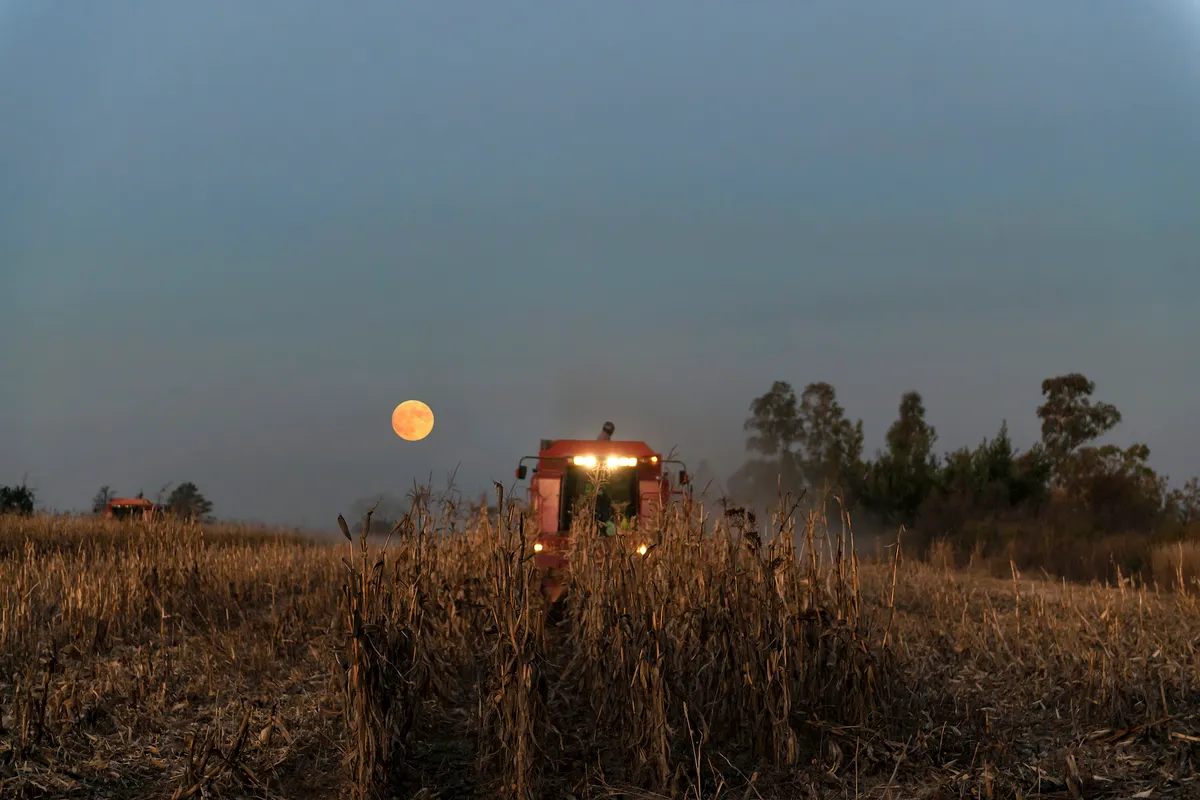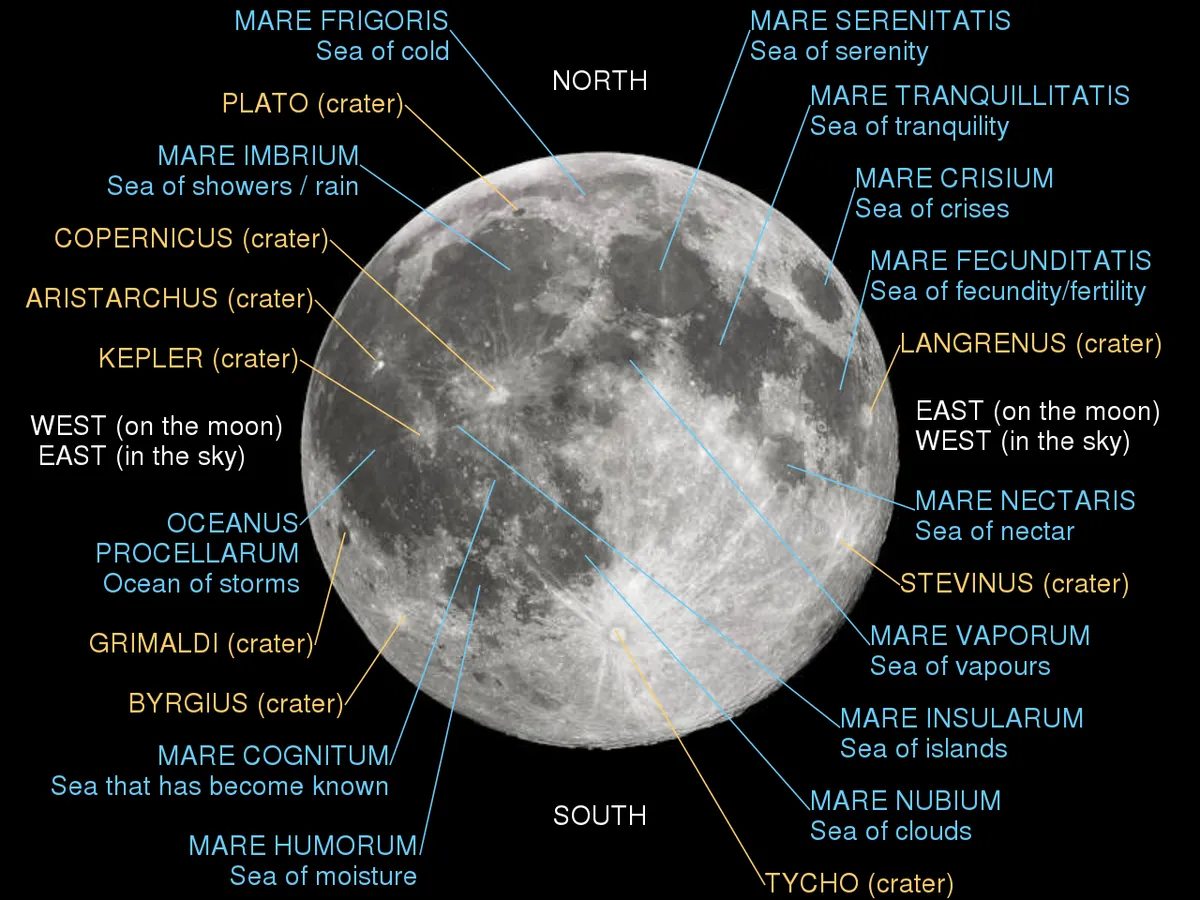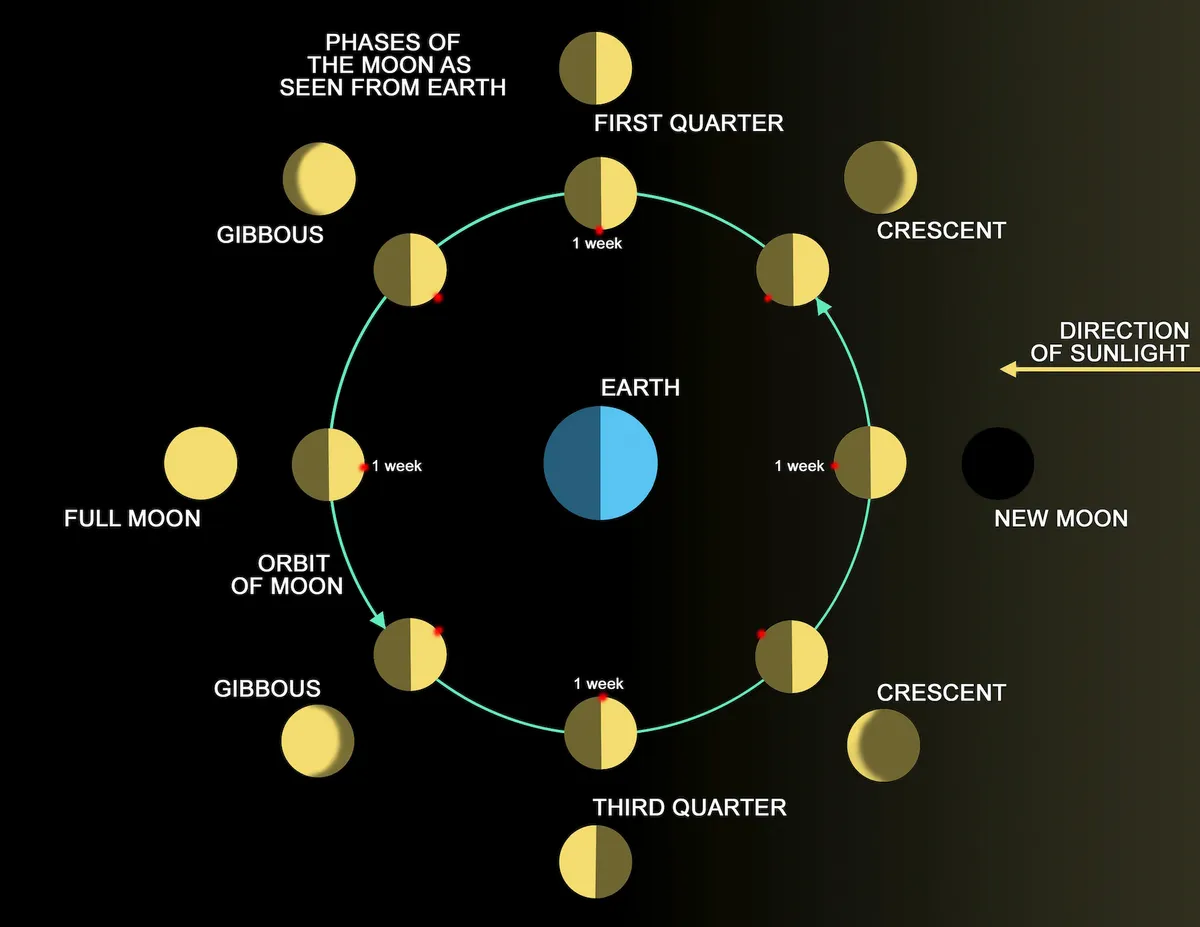After an exceptionally dry year that resulted in multiple droughts being declared across the UK, you (or at least, your garden) might be glad for a little light rain this week.
The nights are drawing in, and with thoughts turned to the Moon following all the coverage of the Artemis mission, it's a good opportunity to reflect, and look to the night sky.
Later on in the month, the autumnal equinox falls on 23 September, and Jupiter reaches opposition on 26 September, making it one of the best times to view the granddaddy of the Solar System. And with a new Moon the night before, conditions are looking good – weather permitting.
If you’re still enjoying the warm weather and clear nights, why not make the most of them with our full Moon UK calendar and astronomy for beginners guide? And, in case you missed it, we pulled together the best pictures of the Harvest Moon 2021.
When can I see the Harvest Moon 2022?
The Harvest Moon will rise tonight, Friday 9 September 2022 and will be visible into the early hours of Saturday 10 September 2022, in the UK and around the world.
The Moon will rise into the constellation Aquarius, while Saturn takes position in Capricornus, and Jupiter in Pisces.

The virtually-full Harvest Moon will rise in the east-southeast at 7:39pm tonight, on Friday 9 September (as seen from London, UK – times will vary depending on location). The Sun will set around 10 minutes earlier at 7:28pm, meaning the Moon will rise into a gradually darkening sky. The full Harvest Moon will set in the west-southwest at 6:01am the following morning, 10 September.
If weather spoils the occasion, or you are unable to see the full Harvest Moon at its peak, it will also appear full the night before on the night of 8-9 September, and over the weekend on 10-11 September. In London, conditions are unsettled, although it's looking hopeful that dark clouds from earlier in the day will give way to lighter cloud cover. So there's a good chance we'll be able to see the Harvest Moon peeking out from behind some patchy clouds.
Two days before full on the 8 September, the waxing gibbous Moon will pass 3.9° south of the planet Saturn. The day after full, on 11 September, the now waning Moon will be just 1.8° south of Jupiter, while a week later on 17 September, the Moon (now in its last quarter) will be 3.6° north of Mars.
When is the best time to see the Harvest Moon?
The Harvest Moon this year will reach peak illumination at 00:59am on Saturday 10 September. So, in terms of the human body clock, that means staying up late on Friday night. The peak will last for just a moment, and this moment has a name: syzygy. It occurs when the Earth is directlybetween the Sun and the Moon, in a straight line.
If you have a clear view of the horizon, and you don't mind missing the full Moon at its peak (the difference is very difficult to discern with human eyes anyway), then seeing the Moon just after it rises should offer you the best view. Viewing the Moon just after moonrise has the added bonus that our satellite will appear redder in colour (see below, 'What Will the Harvest Moon Look Like' for more details).
If you live in an area where the horizon is obstructed (for example, by buildings or trees), then it’s recommended you wait a little longer, until the Moon has risen higher in the sky.
Why is it called the Harvest Moon?
For the northern hemisphere, the full Moon that occurs nearest to the September equinox is known as the Harvest Moon. Depending on the year in question, the Harvest Moon can occur up to two weeks before the equinox – this year it’s 13 days before – or up to two weeks after.

“The earliest Harvest Moon occurs on 8 September, latest on 7 October,” explains astronomer and BBC's The Sky At Night presenter Pete Lawrence.
In the southern hemisphere, the Harvest Moon will occur in either March or April. This year, the Harvest Moon for the southern hemisphere occurred on 18 March 2022. The September full Moon in the southern hemisphere is called the Worm Moon.
The Harvest Moon is so-called because in a less-mechanised era (and before electricity) the bright Moon would cast a welcome light over farmer’s crops, allowing them to extend their working day, and continue harvesting past sunset. Useful when crops are at their most abundant.
For a similar reason, the Harvest Moon is also sometimes called the Corn Moon or the Barley Moon.
What will the Harvest Moon look like?
If we are offered clear skies, the full Moon may take on a reddy-orange hue as it rises above the horizon. This is down to a process known asRayleigh scattering, whereby sunlight is scattered by the layer of gases that envelop the Earth; the atmosphere.
When the Moon is near to the horizon, you're looking through more of the atmosphere, and light has a longer distance to travel. The more atmosphere, the more those colours with shorter wavelengths, like blue, get scattered. Left behind are those colours with longer wavelengths, like red, orange and yellow.
Once the Moon has risen higher, less of the blues are scattered, and that’s when it starts to take on the more familiar greyish-white colour.
Using just your eyes, you should be able to distinguish several darker regions on the Moon. These dark patches, often referred to as 'The Man in the Moon', are called ‘mares’, and cover around 15 per cent of the Moon’s surface. But they’re not actual seas (‘mare’ being the Latin word for ‘sea); they’re ancient volcanic plains.
Most scientists are in agreement that the mares were formed as a result of intense bombardment by asteroids, causing the extensive melting and extrusion of basaltic lavas. Their iron-rich composition is what makes them less reflective with a lower albedo, and therefore darker to the naked eye.

If we get rain along with clear skies (or you're near another water source such as a waterfall), keep your eyes peeled for the super rare night sky phenomenon, a moonbow.
Is the Harvest Moon in 2022 a supermoon?
No, the Harvest Moon in 2022 is not a supermoon.
Supermoons are categorised when the Moon is at 360,000km (or less) away from Earth in its orbital path, and we'll often have two or three full supermoons in a row. In 2022, the Strawberry Moon (June), the Buck Moon (July) and the Sturgeon Moon (August) were all supermoons.
There are no more supermoons in 2022. The next supermoon will be 1 August 2023, followed by a rare blue supermoon that same month, 30 August 2023.
What happens to moonrise times around the equinox?
Typically, the Moon rises around 50 minutes later every day in the lunar cycle. If you want the specifics, it moves, on average, 13.2° per day relative to the background stars.
However, around the equinox, the Moon rises at a similar time each day.
There are two equinoxes in a year, and the September equinox is when the Sun crosses the celestial equator (an imaginary line in the sky above Earth’s equator), going from the northern hemisphere to the southern hemisphere. It’s the opposite of the March equinox, when the Sun crosses the celestial equator, going from the southern to the northern hemisphere.
“The nearest full Moons to the September equinox have the property that their fuller phases rise, from one night to the next, with the minimum difference in time”, Lawrence says. “As a result, the fuller phases appear at similar times of the evening”.
"In reality, the full Moons a month on either side of the Harvest Moon exhibit only marginally greater rise time differences. The average fuller phase moonrise difference is around 50 minutes, the greatest occurring near the March equinox when it’s around 80-90 minutes."

What causes a full Moon?
The full Moon is part of the lunar cycle that occurs over a period of 29 days, 12 hours, 44 minutes, and 3 seconds (generally rounded to 29.53 days). That means we get a full Moon every 29.53 days, and it’s calculated by the time it takes the Moon to orbit the Earth once, as measured from new Moon to new Moon. This is also known as one synodic month.
We usually have 12 full Moons in a calendar year, occurring when the Moon is fully illuminated by the Sun. This happens when the Earth is located directly between the Sun and the Moon.
However, because one lunar cycle takes less than one calendar month in our Gregorian calendar, we sometimes have 13 full Moons in a year. This occurs around every two to three years. This means that we will see two full Moons in a single month, and this extra full Moon is known as a ‘blue Moon’. The next blue Moon will occur 30 August 2023.
Similarly, we sometimes get two new Moons in a month, and this extra new Moon is known as a Black Moon. The most recent Black Moon was 30 April 2022, and the next will be next year, 19 May 2023.

Read more about the Moon: